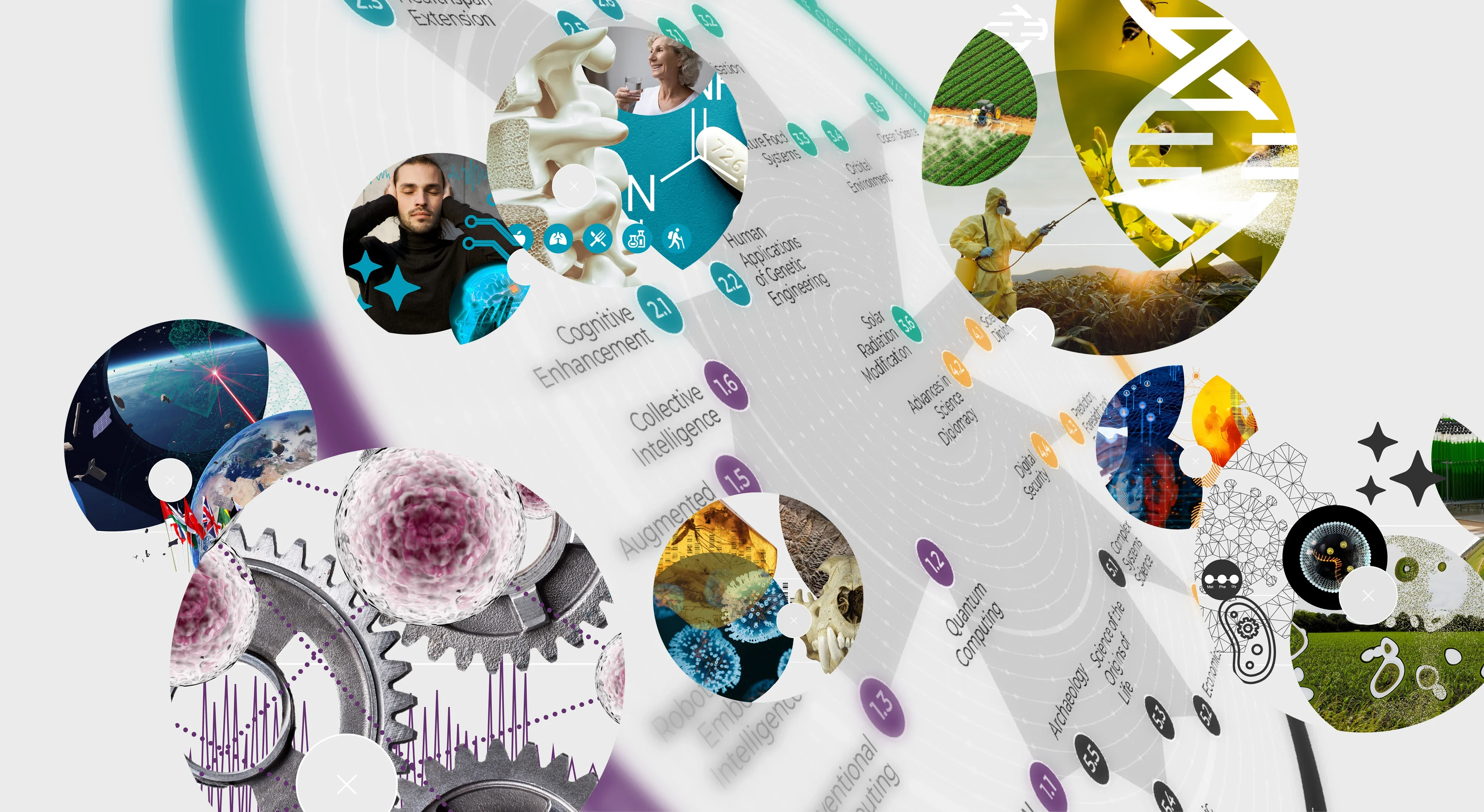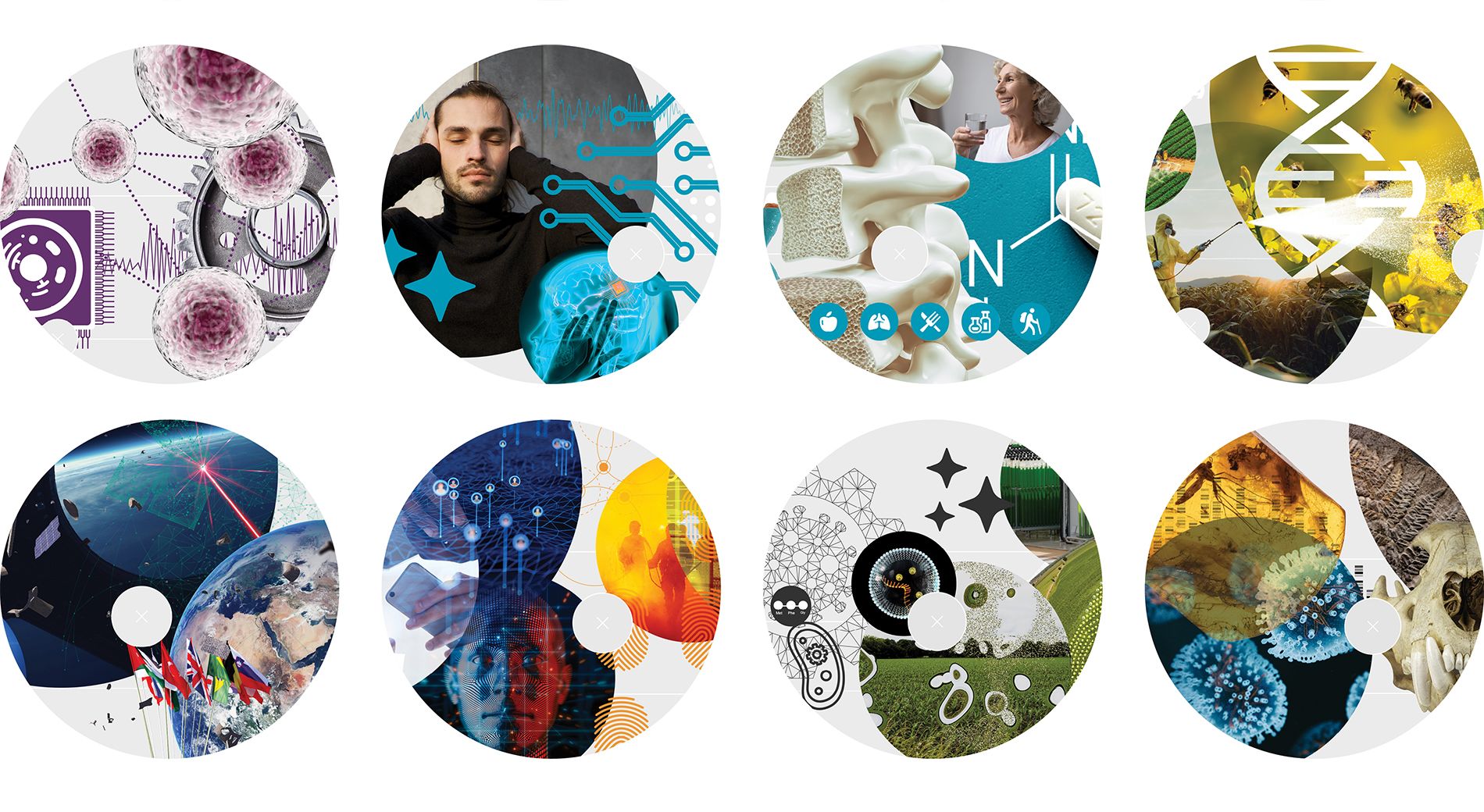Top 8 Anticipated Scientific Trends in the 2024 GESDA Science Breakthrough Radar®
All change for computers
Over the past year, our expectations of what computers are and what they can do have been reshaped by advances in artificial intelligence. But these are not the only radical changes we can expect. Today’s AI systems still run on relatively conventional hardware and have significant constraints, particularly in terms of their reliance on data for training and of their heavy energy consumption. Unconventional computing approaches are attempting to resolve this, including computers that operate with light rather than electrons, and “neuromorphic” machines which seek to emulate the power, flexibility and efficiency of the human brain. The coming years might see an acceleration of alternative and unconventional developments.
One area which has already attracted significant attention, but which may still be under-anticipated, is quantum computing – computing with machines that encode information using the quantum properties of subatomic particles, in principle allowing novel and extremely powerful computational techniques. After decades of development, experts believe niche, but meaningful, applications could be realised within the next five years, with far-reaching consequences for scientific discovery and for a wide variety of industries.
Expanding consciousness, healthspan and lifespan
The nature of consciousness has been debated for millennia: even defining what we mean by the term has proven difficult, differing across both time and cultures. That remains an issue, but is not preventing the development of techniques and technologies that are helping us to probe our mental states and the physiological sites and neural activity associated with them. Pharmaceutical interventions and electrical stimulation are making it possible to routinely modulate consciousness. The same can also be said about cognition, our deliberate thought processes: we are gaining the ability to measure and modify the ways we think, and this neuro-augmentation is only set to advance in the future. Reading from and writing to the human brain could allow us to restore lost nervous function, modulate neural activity to improve mental wellbeing and improve our capacity to think and remember.
There is also a renewed interest in artificial intelligence and what this means for machine consciousness. Researchers are investigating the presence and nature of consciousness in many non-human entities, going far beyond the usual “clever animals” to include invertebrates, machines that emulate human behaviour and even organoids: proto-organs grown from human tissue — including brain tissue. Such an expansive view, if substantiated, could overturn our ideas about the nature and significance of human consciousness. That in turn would help us to better understand what an “inner life” might actually be, and how we might adjust or augment it — initially for therapeutic purposes, but perhaps later for other reasons, too.
We can also anticipate substantial changes in how we repair and enhance the functioning of our bodies, as well as our minds. New approaches to genetic modification will allow us to make extremely precise changes that offer healthspan and lifespan extension. The emerging fields of epigenome editing and metagenomics, which can provide a complete profile of all the diverse organisms in a given microbiome, will take this further, allowing fine-tuned optimisation of environmental and symbiotic factors. This increasing availability of genetic data from all organisms on Earth, including species that have been extinct for hundreds of thousands of years, is providing a treasure trove of information from which AI can identify new tools to combat acute challenges such as rising antibiotic resistance.
Eco-augmentation — reshaping the environment
This year, we have taken a close look at eco-augmentation – deliberate and strategic interactions with nature to develop more robust and sustainable social-ecological systems.
This topic is complex and controversial, since there are many potential benefits to eco-augmentation, ranging from environmental restoration to preserving genetic diversity to increased productivity or increasing robustness. Such interventions require us to reframe future relationships between social and ecological systems in ways that challenge the historic separation of human and natural spheres. But as environments around the world continue to undergo rapid transformation, and new insights from science and technology result in more powerful tools, the appetite for such interventions is growing.
That said, the state of our knowledge about the details of the environment and its sets of complex interactions does not match our ability to intervene. Some ecosystems are well studied, but we need to better understand and monitor their dynamics and health. By illuminating “darkspots” — entire ecosystems or biomes about which we are ignorant — and “greyspots”, for which data exists but is fragmented and disparate, we will better understand how interventions may be employed. A poorly designed or executed intervention might have effects ranging from ineffectual to disastrous — but because technologies such as synthetic biology are advancing rapidly, there is an increasing need to decide how and why we wish to deploy them.
An acute example is our ocean systems, which we know support human ecosystems but are also vulnerable to human activity, most obviously climate change. Advances in ocean science are creating astounding new discoveries, such as dark oxygen sources in the deep sea. Given how little we know currently, one of the few things we can be certain of in the future is that we will make many more such paradigm-shifting discoveries in fields including biodiversity and ecosystem services as well as chemistry, minerals and energy sources, all of which will need to be carefully managed. Equally in need of careful attention is our orbital environment: advances in off-Earth manufacturing and increasing capabilities of space-based resources and infrastructure are intensifying the need to peacefully manage outer space.
The datafication of society
In a year when a huge proportion of the global population went to the polls to vote, the role that digital technology plays in shaping our societies was once again under scrutiny. Conflicts around the world are taking place simultaneously in the information sphere and in physical reality, while the ways in which we interact within civil society are also subject to novel and potentially transformative forces, which are, for the most part, poorly understood.
New technologies including AI, quantum computing and the internet of things promise to make the situation even more fluid in years to come: the ability to deploy convincingly faked material and “bots” capable of holding plausible online conversations, for example, pose new and intractable security risks. The boundaries of privacy are also being forced back as biometric data and detailed information about people's movements and activities becomes available at scale. These developments necessitate new ways of thinking about trust, identity and digital security — for example, providing trusted mechanisms for validating multiple aspects of a single person’s identity — and new approaches to safeguarding data, including a raft of new approaches to encryption.
This plethora of online activity provides opportunity, as well as challenge, however: it supplies raw material for more detailed and accurate modelling of the behavioural science of groups that previously had to be estimated or assumed. Equipped with granular data about social behaviours and interactions, researchers can begin to understand how conflict, polarisation and extremism arise — and develop precisely targeted interventions to defuse dangerous situations before they ignite.
Transformative fundamental technologies
Some technologies have the power to significantly transform huge sectors of society, as well as being an enabling force for technology development itself across many different sectors — AI being a recent example. Other, similarly powerful technologies also present enormous opportunities — though with significant technical, ethical and social challenges.
One such field is synthetic biology, based on precision tools for editing and engineering genomes and other biological molecules. This enables the modification of organisms in fundamental and enduring ways, or the creation of entirely new organisms. Initial applications have targeted medicine and health, but are also starting to be used to develop new carbon-negative materials, foodstuffs and energy sources — as well as to modify ecosystems. In the future, the development of cheap, off-the-self kits for designing biology from scratch will provide huge opportunities for new applications of synthetic biology, but also raise questions of how the applications of such powerful technology will be regulated.
While synthetic biology promises to reshape our future, related technologies offer us unparalleled new insights into our past — redefining archaeology. Significant advances in molecular-level analysis of archaeological remains are starting to give us the ability to detail the biology and behaviours of our ancestors, as well as the prehistory of our environment, climate and societies. These will have revelatory implications for our understanding of our situations today — allowing comparisons of migration trends, for example. As DNA-reading technologies improve to allow us to extract information from deeper and deeper into the past, the distinction between social and natural sciences is likely to further erode to offer unified and powerful insights into key questions about our world.




